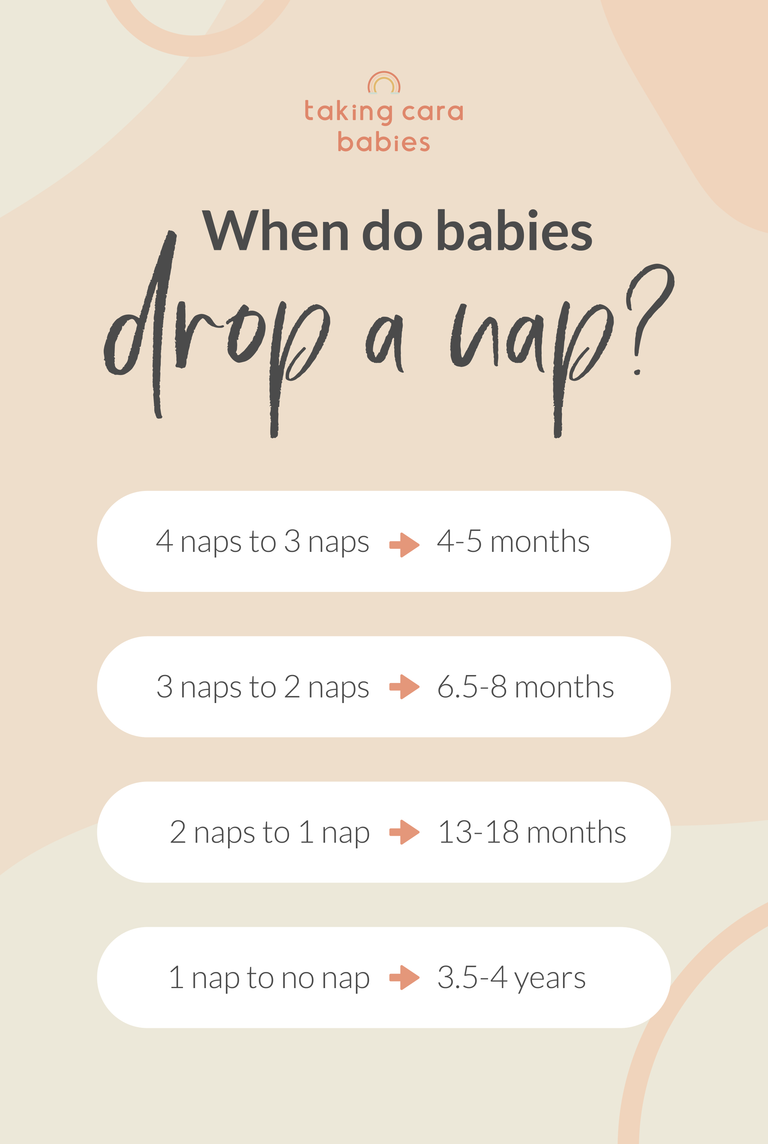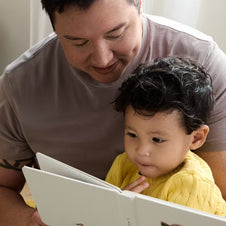You’re not alone if it seems like just about the time you’ve got a predictable nap schedule or routine figured out, everything changes. Perhaps you have to add activities or preschool pickup in the middle of nap time, you start to see short naps pop up, or your baby simply stops napping. Or maybe you’re wondering if it’s actually time to drop a nap altogether.
If the idea of dropping a nap seems stressful, I want to offer you some reassurance: your baby or toddler can do this! But before you dive in, be sure your little one is actually ready to drop a nap.
What are the signs it’s time to drop a nap?
Your baby or toddler is at or near the appropriate age range:
AND you're seeing one or more of the signs below:
1. The last nap of the day is interfering with bedtime.
Is your little one fighting bedtime when it was smooth sailing before? They used to fall asleep independently within minutes, but now they either protest like crazy or just lie awake in the crib.
Your child may simply need to be awake longer before bedtime. You’ll likely want to start by shifting bedtime a bit later, but eventually, you’ll need to drop the last nap to keep bedtime between 7:00 and 8:00 pm AND get the active awake time their body needs to fall asleep easily.
2. Your baby or toddler--all of a sudden--just doesn’t seem tired at nap time and begins to have trouble falling asleep.
If your baby or toddler was able to fall asleep at nap time a week ago but now just won’t seem to drift off, this can be a sign that your little one needs more awake time prior to each nap. Dropping a nap helps create an age-appropriate daytime schedule and prevents a battle at nap time.
Taking Cara Babies Classes
3. Night wakings or early morning wakings are becoming your norm.
Is your little one now waking in the middle of the night or ready to party at 5:00 am when this previously wasn’t an issue? This can also mean it’s time to drop a nap.
Night wakings and early morning wakings can be caused by too much daytime sleep. As your child gets older, their sleep requirements change. Too much daytime sleep CAN create interrupted or shorter night sleep, simply because your baby or toddler’s sleep needs have already been met during the day.
4. Your baby or toddler begins to consistently have short naps--when longer naps were normal before.
Is your baby or toddler suddenly deciding nap time is over after a 30-45 minute snooze?
If your little one starts taking shorter naps when longer naps were normal before, their nap schedule may be the culprit. It’s very possible that they need more awake time before being ready for a solid nap. Dropping a nap during the day can be the answer to helping your baby or toddler be tired enough to take long, restful naps.
How do we drop a nap?
For some little ones and some transitions, dropping a nap seem to happen naturally without much effort. For others, you may need a bit more help. You can find specific guidance by selecting your nap transition below:
4 to 3 Nap Transition
3 to 2 Nap Transition
2 to 1 Nap Transition
1 Nap to Quiet Time Transition











